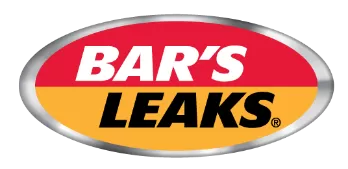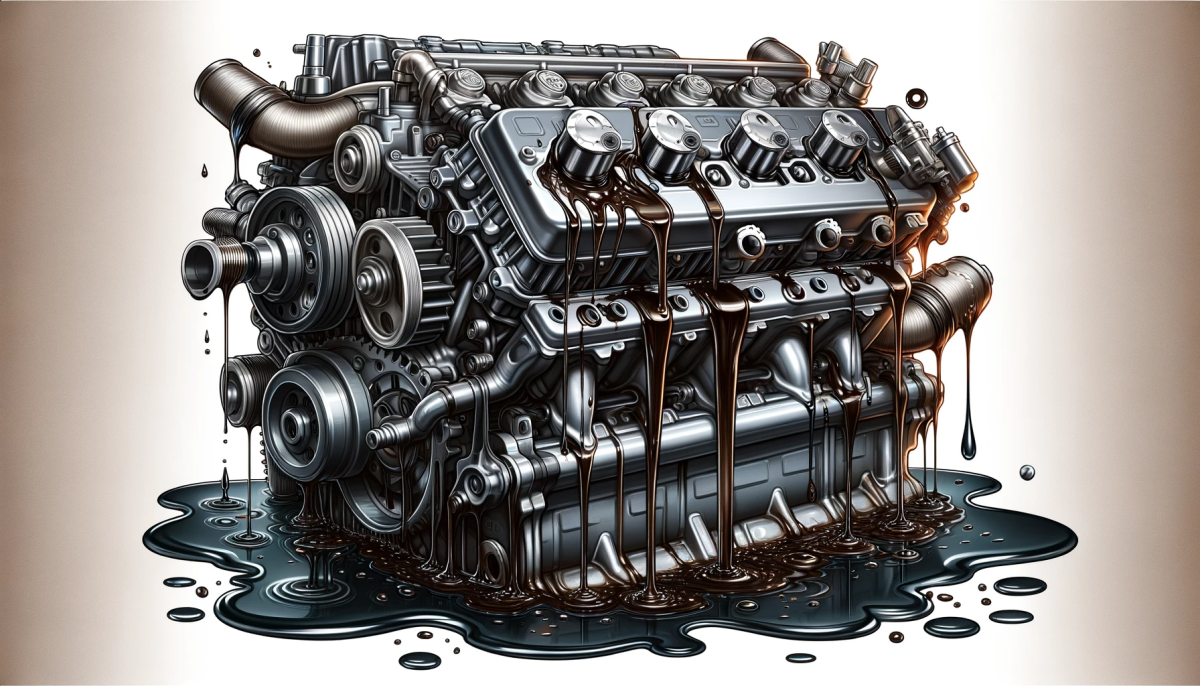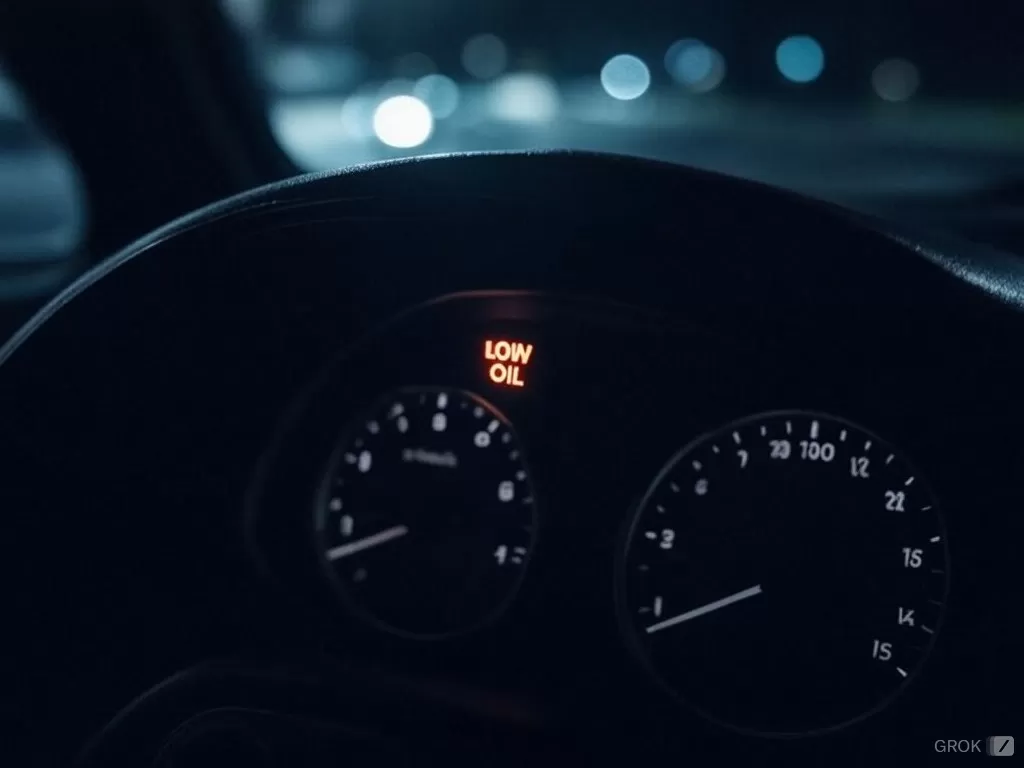Rear Main Seal Leaks, Oil Leaks and Excessive Oil Consumption: Everything You Need to Know
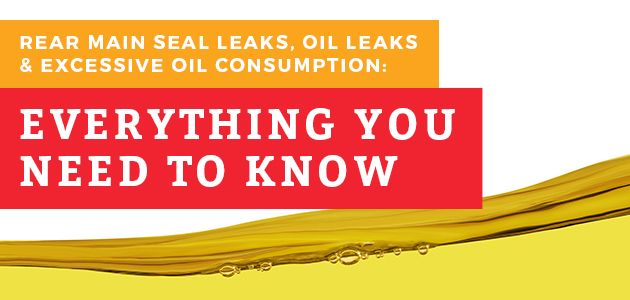
With vehicles, various problems can occur with the engine components over the course of ownership. Some of these problems are simple yet slightly irritating, while others become a bit more serious, yet still easy and low–cost. Still others are quite costly and essential, but easy to perform in your garage if you know your way around an engine. Then there are the big ones: problems that are urgent, costly and very difficult to rectify, and failure to act could be the end of your vehicle. Chief among this last type of problem is the rear main seal leak. In this article:
- What Is a Rear Main Seal?
- Symptoms of a Rear Main Seal Leak
- What Causes Leaks?
- Repair Cost for Rear Main Seal Leak
- Rear Main Seal Solutions
In the following guide, we’ll bring to light the causes and symptoms of rear main seal leaks, and explore solutions to this problem in depth. Product solutions mentioned in this article include:
- Main Seal Motor Oil Leak Repair (MS-1), Concentrated Rear Main Seal Repair (1040) and Engine Oil Stop Leak Concentrate (1010) — for rear main seal and other engine-related oil leaks.
- VS-1 — for an associated oil consumption problem.
The sooner you act on the vehicular symptoms described in this article, the likelier you’ll save money and spare yourself the frustration of a failing car.
1. It’s All About Oil Leaks — What Is a Rear Main Seal, Anyway?
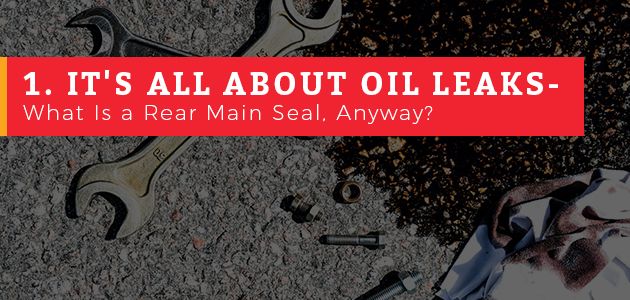
Buried in your vehicle’s engine compartment is the rear main seal, which is designed to prevent oil leaks between the block and crankshaft. As a hard-to-reach component, manufacturers originally intended rear seals to last the life of a vehicle with no need for change-outs, unlike various pieces under the hood that drivers are expected to replace every couple of years.
Unfortunately, oil can easily leak from the rear main seal due to its placement at the back of the engine. The dangers of rear main leaks are twofold. For one, a leaky rear main seal will rapidly drain the oil supply.

For today’s vehicles, the rear main seal comes in one piece. The majority of older U.S.-built cars would use the rope or wick seal, though sometimes manufacturers swapped these out for split seals, which first emerged at the end of the 1950s in Chevy V8 engines:
- Rope/Wick Seal — Named because of its resemblance to rope and lamp wicks, engineers designed this seal to handle the impacts of intense crankshaft rotations and the friction caused by fluctuations in temperature. Consequently, a rope/wick seal can fail in one of two ways: shrinking in cold weather, or expanding in hot conditions. The seal is kept from drying out with a small amount of oil, which also keeps it fitted in its place next to the crankshaft. In modern cars, rope seals lack the strength of older counterparts when it comes to preventing stray oil. According to various car specialists, the lagging performance of newer rope/wick seals is due to altered design work and tightened environmental regulations, which have restricted materials like asbestos from used. Due to the dwindling market for seals of this type, manufacturers have allegedly cut corners in an effort to make cheaper versions of the product. A rope/wick seal is vulnerable to factors such as crankshaft contact and engine speed, and therefore needs to match the RPM requirements of your engine. In order to avoid bad replacement seals of this type, only buy from reputable parts suppliers.
- Neoprene/Split Seal — Made of rubbery material, the neoprene has a lip-shape, fitted in one direction to prevent the passage of oil. Though effective, neoprene seals are equally as vulnerable to leaks as rope/wick seals are.
- One-Piece Seal — With its unique round design, the one–piece seal only works on specially-made crankshafts, and therefore lacks the universality of rope and neoprene seals. Therefore, you cannot install one–piece seals in older engines without a crankshaft replacement. On the downside, it’s one of the hardest seals to service.
2. What Are the Symptoms of a Rear Main Seal Leak?
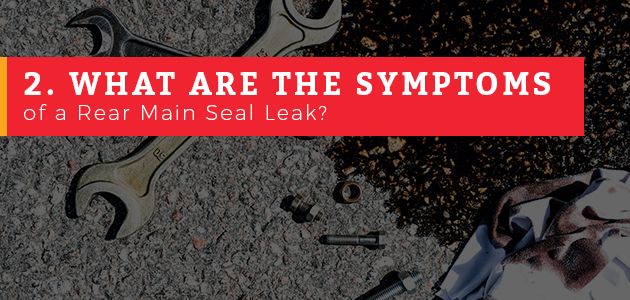
If you suspect you have a rear main seal leak, the issue can be hard to identify because the parts in question are relatively unknown to most car owners. In fact, the hard-to-reach location of the rear main seal goes to show how this part of the vehicle was never really intended to be replaced during the span of the car’s ownership, unlike the battery, filter and other components that lie directly under the hood.
The main symptom of a rear seal leak is when your car starts leaking engine oil at a faster rate. If your vehicle has started leaving black puddles on your driveway or parking lot, something is definitely wrong with the situation underneath the vehicle. Another sign is that you find yourself needing to top-off your oil with greater frequency, despite driving the same routes as before. For example, if the oil pressure light goes red just weeks after a fresh change of oil, there’s a strong possibility that you have an engine oil leak caused by a rupture in the rear main seal. Therefore, key indicators of a leak include:
- Oil stains left in driveways and parking lots
- Fast/aggressive oil loss
At the early stage of a leak, oil loss might not be rapid enough to identify by spots on a stretch of concrete where the vehicle has parked. While you might see an oil stain grow over time in your driveway, the leaking might not be swift enough to leave its mark in supermarket parking lots or during hours when the car is parallel parked on city streets. Therefore, you might need to run tests to determine whether you’re losing oil or not.
A simple way to test if is your car leaking oil is to idle the engine for 15 minutes to see whether any oil appears on the surface underneath. Since the car’s movement and other car parts can tend to hide oil leak symptoms, most evidence of leaks goes unseen. For example, oil could be getting splashed along chassis components as you drive to and from work at highway speeds. By running the car at a standstill, you get a better indicator of how oil is consumed during commutes along roads and highways.
3. Why Do Cars Develop Rear Main Seal Leaks?

In some cases, a rear seal will fail after only a short period on the road, despite the use of quality parts. When this occurs, the likeliest causes are nearby components in the engine, such as the crankshaft or caps. Or the problem could be down to poor–quality installation work, where parts were mismatched or rubbed against each other during the reassembly stage. When leaks get bad, a faulty crankshaft is usually the problem. If a crankshaft has burrs (rough edges or ridges), this will quickly affect the rear seal. The problem could also stem from the main caps, which could possibly be misaligned in size.
For fans of hot-rods and classic cars from the 1950s, a rear main seal leak can be one of the most embarrassing malfunctions. The presence of a fresh oil puddle on an otherwise clean parking space would indeed cramp the style of any proud muscle car owner. As if the leaking isn’t bad enough, oil can spray along the undercarriage of your vehicle. This, in turn, attracts dust and dirt, which can lead to buildup and corrosion on exposed car parts, such as the chassis bushings. Moreover, stray oil can make its way to the exhaust system, which leads to bad smells and even smoke if the oil amount is large enough.
In front-wheel drive vehicles, rear main seal replacement is especially difficult because the seal is placed at the opposite end of where the pulleys and engine-access features are located. When oil leaks from the main seal, it usually occurs at the connecting point between the engine and transmission. Therefore, to gain access to the rear main seal, a mechanic will usually have to remove parts of the transmission and nearby components. What this generally means is a near-entire disassembly of the engine, removing each component from the vehicle one-by-one and setting them aside until reaching the faulty main seal at the bottom and ultimately changing it out for a new one.
In some vehicles, the crankshaft might need removal as well, which could prompt the mechanic to advise an engine rebuild. As with most big maintenance jobs, the mechanic will urge the car owner to invest in replacements for various other components that are near or next to the part in question. While this can sometimes be a good idea due to the age of certain parts and their likelihood of failure, a customer can wind up spending considerably more than just the price of the original repair.
To avoid going down this road, it’s important to have a basic idea of the type of repairs that are actually necessary when it comes to engine oil leak maintenance. If there’s another hard-to-access part that could fail soon, but will be accessible as the rear seal change-out is in progress, that would be an example of wisely-chosen additional work for the vehicle. Also, in our experience, if the rear main seal isn’t damaged beyond hope, an oil stop leak (chemical repair) product could very well be your best option.
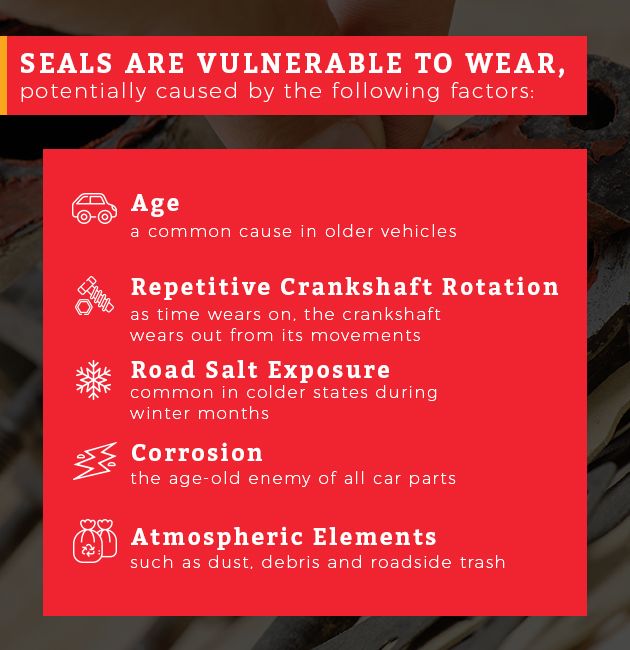
Rear main seals usually consist of silicone or rubber material. As such, seals are vulnerable to wear, potentially caused by the following factors:
- Age — a common cause in older vehicles
- Repetitive Crankshaft Rotation — as time wears on, the crankshaft wears out from its movements
- Road Salt Exposure — common in colder states during winter months
- Corrosion — the age-old enemy of all car parts
- Atmospheric Elements — such as dust, debris and roadside trash
Due to the high cost and intensive labor required in most rear main seal leak repairs, mechanics will often advise that you replace the seal during any car repair that involves removal of the transmission. That way, you can preempt the possibility of a rear main seal leak occurring and avoid the costly repair work that would result. Even if your finances make you generally cautious when it comes to such decisions, the descriptions covered here about rear seal oil leaks could serve as warnings against putting off this type of maintenance for any reason. We talk to customers about oil leaks every day, and we’ve heard horror stories about what happens to a car when a real main seal oil leak goes neglected for too long.
The seal can gradually sink into the metal crankshaft and wear down the grooves. In an effort to remedy this problem, aftermarket companies have put out alternately designed seals that adjust the placement of the seal lips. Stainless steel sleeves can also be pressed over the crankshaft to renew the worn surface and give the seal a new place to ride on. However, these additions are hard to install and easy to damage due to their placement under the vehicle.
When a vehicle is parked at an angle, an oil leak is bound to be more severe. Therefore, if your driveway is built on an incline, park your car on the street in front of your house until the problem is fixed. On vehicles with manual transmission, the clutch disc can become soaked with oil if you let a leak persist for too long.
4. What Is the Typical Repair Cost for a Rear Main Seal Repair?
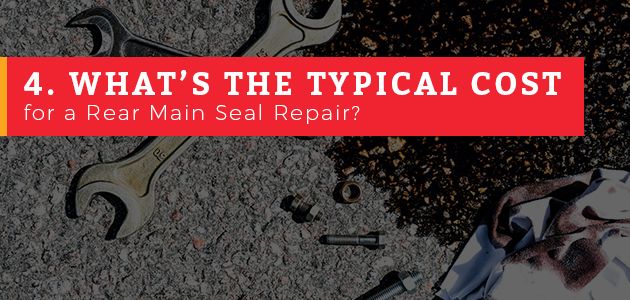
According to national averages gathered by Repair Pal, the cost for a rear main seal repair ranges from $659 to $836(goes to new website)(opens in a new tab). These totals are based on a combination of labor costs, which typically range from $624 to $789, and parts costs, which respectively range between $35 and $47. Of course, costs can vary based on the make and model of a given car, as well as taxes and fees that might apply in certain states. Therefore, before you set your mind on rear main seal repairs, make sure that your oil leak is properly diagnosed, and consider alternative options for dealing with the problem.

If you have determined that your car is leaking oil, check the transmission and oil pan for evidence. If oil appears on the front of the former and back of the latter, it could be due to a rear main seal leak, but there are still other possibilities. Therefore, it’s important to check further up in the engine compartment for drips. After all, you wouldn’t want to misdiagnose a different, less costly problem in need of oil leak repair for the much more difficult (and expensive) issue of a rear main seal leak. In fact, you might find yourself relieved to discover a critical yet different problem with your vehicle that would ultimately be easier and cheaper to fix.
Other places to inspect for leaks are the valve cover gasket and valley pan, but you’ll need to get under the vehicle with a flashlight to check these parts. For added protection, you’ll probably want to put on grubbies, goggles and protective gear around your head before you get down on the ground. Admittedly, tasks such as this are among the more down and dirty aspects of DIY car work. Nonetheless, the cover gasket and valley pan are easier and less expensive to replace than the rear main seal, the replacement of which usually involves the removal of most engine parts.
One way to identify a leak in your car is with the use of a dye. Install the dye into the vehicle, drive the car around and then use a special light to help determine where the leak is coming from.
If the increasingly rapid oil loss in your vehicle is in fact due to a leak in the rear main seal, you’ll need to determine what to do next: pay for rear main seal repair work or simply sell the vehicle. However, depending on the nature and extent of the leak, you could also consider a professional, time-proven oil stop leak product that would repair the gap in the rear seal. In addition to oil leak sealer products, some drivers switch to thicker oils like 10W30 over 5W20 for less runniness in the engine, although this is a temporary solution, and eventually, the leak will return as the main seal issue gets worse.
Your options might be narrower if the rear seal is exceedingly damaged, which could possibly be the case in a vintage car with outdated engine parts. If the vehicle is relatively old, the following steps are likely in order:
- Inquire with local car specialists about the current as-is value of your vehicle.
- Look for information online about the current resale value of unrepaired vehicles of the same make and model.
- If you are unable to determine the current as-is value, see whether you can donate the vehicle to charity as a tax write off.
- Determine whether the cost of a rear main seal repair would outweigh the cost of a replacement vehicle.
Then again, you might wish to keep the vehicle regardless of the problem at hand or cost of repair. For example, if the vehicle in question is a vintage prized possession, you’re not likely to let it go over a malfunctioning engine component. Likewise, if you’ve owned the vehicle for several decades and it holds sentimental value, you’ve likely been down the road of costly repairs many times in the past. In either case, you could opt for a professional-grade oil stop leak solution like Bar’s Leaks Main Seal Motor Oil Leak Repair (MS-1), which promptly restores leaky rear main seals and allows you to get back out on the road.
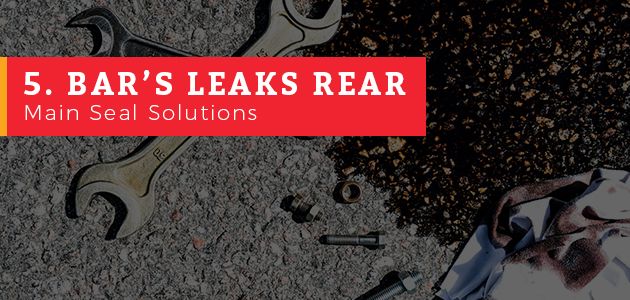
5. Bar’s Leaks Rear Main Seal Solutions — Main Seal Motor Oil Leak Repair (MS-1), Concentrated Rear Main Seal Repair (1040) and Engine Oil Stop Leak Concentrate (1010)
A rear main seal leak is among the worst things that can happen to a vehicle because it impacts a hard–to–reach engine component. For many drivers, news of such a problem means that it could be time to purchase a new vehicle, because rear main seal repair costs (money, time and hassle) typically surpass the worth of vehicles old enough to develop such leaks. Because of this, a rear seal leak is the type of car problem that any vehicle owner wants to avoid, because the consequences literally exceed the value of many vehicles and blow the repair budget of the average driver in today’s economy.
Regardless of whether a driver is skilled and knowledgeable in car maintenance, the task of replacing a leaky rear seal is generally too difficult or time-consuming. If you’re not intimidated by the thought of dismantling your engine piece by piece just to access the problem component, you might be up for the challenge, but experts at this line of work will often say it’s easier said than done. Tellingly, even car repair specialists have balked at the thought of having to change out rear main seals. Basically, rear seal leaks are bad news because they’re:
- A matter of repair vs. replace
- Costlier than many used vehicles’ overall worth
- Hard to access
However, an alternative to costly maintenance and regretful vehicle trade–ins does exist thanks to the award-winning engine oil leak repair formulas offered by Bar’s Leaks. If your vehicle is in urgent need of an oil leak repair due to a gap in the rear main seal, the following solutions can fix most rear main seal leaks and prevent your car from leaking oil down the road:
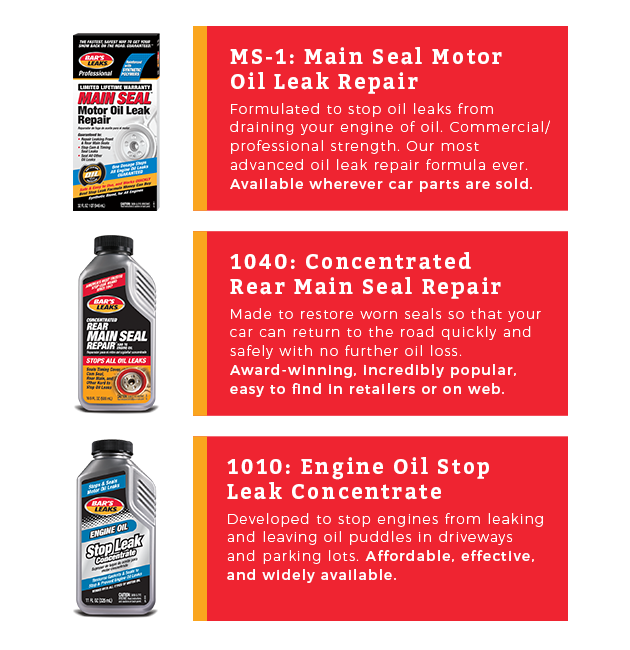
- MS-1: Main Seal Motor Oil Leak Repair — Formulated to stop oil leaks from draining your engine of vital oil. Commercial/professional strength. Our most advanced oil leak repair formula ever. Available wherever premium auto parts are sold.
- 1040: Concentrated Rear Main Seal Repair — Made to restore worn seals so that your car can return to the road quickly and safely with no further oil loss. Award-winning, incredibly popular, easy to find in retailers or on web.
- 1010: Engine Oil Stop Leak Concentrate — Developed to stop engines from leaking and leaving oil puddles in driveways and parking lots. Affordable, effective, and widely available.
A quick side note: if you notice your car is losing or burning oil at a somewhat faster-than-normal rate, you don’t see telltale oil puddles on the ground, and you’ve noticed billowing exhaust from your tailpipe each time you start the engine, the issue probably isn’t due to a rear main seal leak. Instead this can be caused by a valve seal leak, a common problem we hear about all the time from customers.
Common causes of seal valve leaks include vehicle age and mileage. However, one of the likeliest reasons for a seal leak is the prolonged storage of a vehicle. When you store a vehicle in a garage for weeks or months on end, the seal can dry and harden, which can ultimately lead to cracks and leaks. While leaks of this nature aren’t as severe or potentially costly as rear main seal leaks, they’re still a problem that requires attention.
To stop a valve seal-related oil leak from getting out of hand, remedy the problem with the Bar’s Leaks Valve Seal Oil Consumption Repair (VS-1), available from Bar’s Leaks. This product is specially formulated to seal leaks in the valve seal and prevent further burning and overconsumption of engine oil.
To learn more about Bar’s Leaks products for rear main seal leaks, valve leaks, engines, cooling systems, hydraulics, power steering and more, click here to see a catalog of all Bar’s Leaks products.
As usual, if you have any questions, hit us up on Facebook(goes to new website)(opens in a new tab), or contact our support team. We’re always happy to help.

